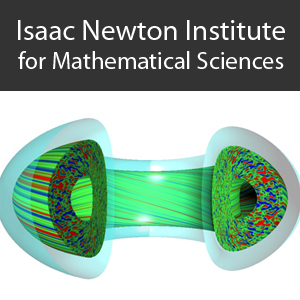The simulation effort for the basic plasma physics experiment TORPEX
Duration: 38 mins 43 secs
Share this media item:
Embed this media item:
Embed this media item:
About this item

| Description: |
Ricci, P (Lausanne)
Thursday 29 July 2010, 15:00-15:40 |
|---|
| Created: | 2010-08-11 14:23 | ||||||
|---|---|---|---|---|---|---|---|
| Collection: | Gyrokinetics in Laboratory and Astrophysical Plasmas | ||||||
| Publisher: | Isaac Newton Institute | ||||||
| Copyright: | Ricci, P | ||||||
| Language: | eng (English) | ||||||
| Credits: |
|
||||||
| Abstract: | TORPEX is a toroidal device in which a vertical magnetic field superposed on a toroidal field creates helicoidal field lines with both ends terminating on the torus vessel. As in the scrape-off layer of magnetic fusion device, the plasma turbulence driven by magnetic curvature and plasma gradients causes plasma transport in the radial direction while at the same time it is progressively lost due to flows along the field lines. The configuration facilitates the experimental study of low frequency instabilities and related transport, as it allows more detailed experimental diagnostics and wider parameter scans than are usually possible in fusion devices. The relatively simple magnetic geometry of the TORPEX configuration also enables deep theoretical investigations, analytical development, and makes an accurate comparison between simulations and experiments possible. Recently, a three-dimensional global fluid code that solves the drift-reduced Braginskii equations in the whole TORPEX domain has been developed, taking into account the plasma source, plasma losses at the torus vessel, and the plasma turbulent dynamics. We show simulation results and their physical interpretation across a wide parameter space; in particular, we point out that three turbulent regimes exist, which are driven respectively by the ideal interchange mode, by the resistive interchange mode, and by drift waves. Comparison with experimental results is discussed, showing that the predicted turbulence regime transitions are in agreement with the experimental observations. |
|---|---|
Available Formats
| Format | Quality | Bitrate | Size | |||
|---|---|---|---|---|---|---|
| MPEG-4 Video | 480x360 | 1.84 Mbits/sec | 535.28 MB | View | Download | |
| WebM | 480x360 | 680.16 kbits/sec | 192.87 MB | View | Download | |
| Flash Video | 480x360 | 567.96 kbits/sec | 161.34 MB | View | Download | |
| iPod Video | 480x360 | 505.47 kbits/sec | 143.58 MB | View | Download | |
| QuickTime | 384x288 | 849.21 kbits/sec | 241.23 MB | View | Download | |
| MP3 | 44100 Hz | 125.04 kbits/sec | 35.32 MB | Listen | Download | |
| Windows Media Video | 477.01 kbits/sec | 135.50 MB | View | Download | ||
| Auto * | (Allows browser to choose a format it supports) | |||||

